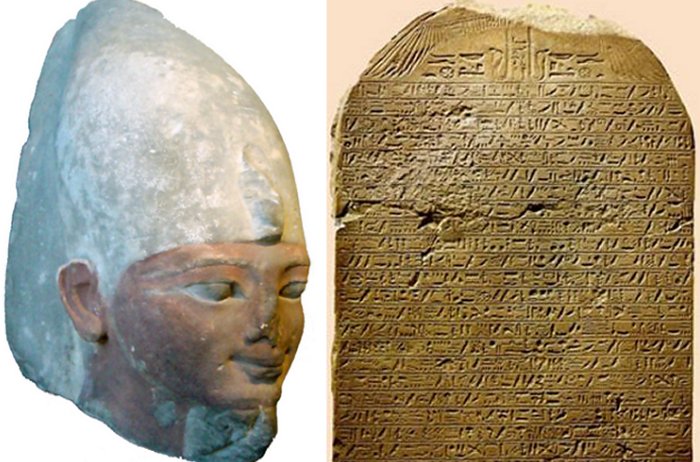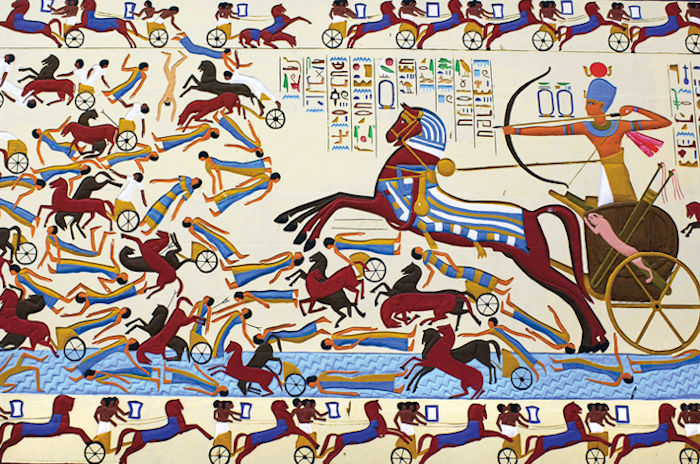How The Hyksos Invasion Of Ancient Egypt Changed History
Ellen Lloyd - AncientPages.com - In 1650 B.C., Egypt was invaded by a group of foreigners who, according to the Jewish historian Flavius Josephus called themselves Hyksos.
The Hyksos people were mixed, West Asian people. The Hyksos established a powerful empire in large parts of ancient Egypt that lasted over 100 years before the pharaoh Kamose, the last king of the Theban Seventeenth Dynasty, started a war of liberation from his seat of power in southern Egypt.
Ahmose I and Tablet Records. Credit: Wikipedia - Brooklyn Museum - CC BY-SA 2.5
Josephus mistranslated Hyksos as "Shepherd Kings," but Hyksos was most likely an Egyptian term for “rulers of foreign lands” (heqa-khase), and it almost certainly designated the foreign dynasts rather than an ethnic group. Modern scholarship has identified most of the Hyksos kings’ names as Semitic.
The Hyksos occupation was later described as a highly traumatic event for the Egyptian people, but it is not clear whether this was actually the view of contemporary Egyptians who lived under their control.
From Avaris, the Hyksos 15th dynasty ruled most of Lower Egypt and the Nile valley as far south as Cusae. The 16th Dynasty rulers, who were minor Hyksos kings, ruled in Upper Egypt simultaneously with those of the 15th dynasty. Much of ancient Egypt was under the control of the Hyksos at the time.
Pharaoh Kamose’s father started the initiative to remove the Hyksos from power, and it is quite possible that he lost his life in battle with the Hyksos.
Kamose sought to extend his rule northward over all of Lower Egypt, but he was met with much opposition. He was killed in a battle, and his mother, Ahhotep I, and brother Ahmose I, continued the campaign against the Hyksos.
Pharaoh Ahmose I completed the conquest and expulsion of the Hyksos from the delta region, restored Theban rule over the whole of Egypt, and successfully reasserted Egyptian power in its formerly subject territories of Nubia and Canaan.
He also founded the 18th Dynasty, New Kingdom, which was the beginning of ancient Egypt’s Golden Age.
Pharaoh Ahmose I laid the foundations under which Egyptian power reached its peak. His reign is usually dated to the mid-16th century BC.
Ancient Egyptian battle. Credit: Public Domain
However, the Hyksos invasion changed the history of ancient Egypt in many ways. The experience of the long foreign occupation resulted in Pharaoh Ahmose I establishing buffer zones between Egypt and its Asian foes.
The period when the 500-meter-long ‘giant fence’ was built near the ancient city of Avaris in Egypt coincided with the invasion of Egypt by the Hyksos.
The emerging Egyptian empire stretched from Sudan to the south, across Syria in the north, and Iraq to the east. Ancient Egyptians were now able to bring home war trophies and slaves from neighboring countries that were also forced to pay taxes to the New Kingdom.
Ancient Egypt experienced a new wave of technological, cultural, and religious developments, highly influenced by the Mitanni Kingdom, the Hittite Empire, and Mesopotamia. Foreign diplomats, merchants, and craftsmen moved to ancient Egypt.
The war with the Hyksos led to the Egyptians establishing their first standing army.
Soldiers were given lands big enough to support their families, and those who distinguished themselves in battle were rewarded with large estates. The money they earned on their lands gave them the possibility to move to the larger cities. A new social class of richer people had been born.
Hyksos people - An earlier group of Asiatic peoples depicted entering Egypt c. 1900 BC, from the tomb of a Twelfth Dynasty official Khnumhotep II, under pharaoh Senusret II at Beni Hasan. Image credit: Wikipedia
The prosperity of the New Kingdom also changed Egypt’s religious life. The pharaohs still had larger temples than the gods, but the country’s military success made the rulers more eager to share the glory with the ancient gods.
Amun-Re was soon worshipped all across Egypt. With the expulsion of the Hyksos rulers of Egypt, Amun's growth was accelerated due to the vindication of Egyptian power and Amun-Re as a protector of the Egyptian state and the Monarchy, and the deity’s importance grew spiritually and politically.
Ram-Sphinx of Amun-Ra. Credit: Aidan McRae Thomson - Flickr - CC BY-SA 2.0
The New Kingdom that Egypt became something of a Theocracy. At the apex of his worship, Egyptian religion approached monotheism. The other gods became mere symbols of his power or manifestations of Amun-Re. In essence, he became the one and only supreme deity.
This was a very unusual religious development in ancient Egypt, where it was common for each city to have its own god.
Updated on August 18, 2023
Written by Ellen Lloyd – AncientPages.com
Copyright © AncientPages.com All rights reserved. This material may not be published, broadcast, rewritten or redistributed in whole or part without the express written permission of AncientPages.com
Expand for referencesReferences:
Fagan, Lord and Pharaoh: Carnarvon and the Search for Tutankhamun
Jan van Tuyl, A New Chronology for Old Testament Times
More From Ancient Pages
-
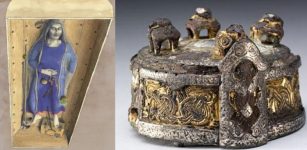 Mysterious Ancient Grave With Unusual Artifacts That Belonged To A Völva – Norse Female Shamans Did Exist
Featured Stories | Jul 2, 2017
Mysterious Ancient Grave With Unusual Artifacts That Belonged To A Völva – Norse Female Shamans Did Exist
Featured Stories | Jul 2, 2017 -
 What Was Asphalt Doing On A 9,000-Year-Old Skull Discovered In The Judean Desert
Archaeology | Feb 1, 2022
What Was Asphalt Doing On A 9,000-Year-Old Skull Discovered In The Judean Desert
Archaeology | Feb 1, 2022 -
 World’s Oldest Shoes: Some Look Surprisingly Modern
Artifacts | Jun 22, 2023
World’s Oldest Shoes: Some Look Surprisingly Modern
Artifacts | Jun 22, 2023 -
 7,000-Year-Old Inscription With Undeciphered Vinca Script – One Of The World’s Earliest Writing Systems Discovered
Archaeology | Feb 17, 2018
7,000-Year-Old Inscription With Undeciphered Vinca Script – One Of The World’s Earliest Writing Systems Discovered
Archaeology | Feb 17, 2018 -
 Inventory Stela And Its Message: Controversy About This Artifact Still Remains
Artifacts | Jul 15, 2017
Inventory Stela And Its Message: Controversy About This Artifact Still Remains
Artifacts | Jul 15, 2017 -
 3,500-Year-Old Tomb Discovered In Luxor – Who Is The Royal Buried Inside?
Archaeology | Jan 16, 2023
3,500-Year-Old Tomb Discovered In Luxor – Who Is The Royal Buried Inside?
Archaeology | Jan 16, 2023 -
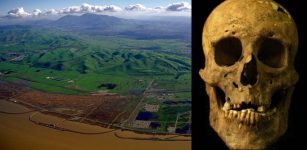 Discovery Of Unusual Ancient Skeleton Offers Evidence Giants Inhabited California
Archaeology | Mar 31, 2014
Discovery Of Unusual Ancient Skeleton Offers Evidence Giants Inhabited California
Archaeology | Mar 31, 2014 -
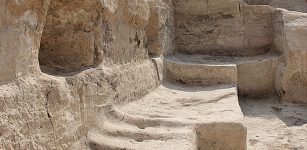 Ancient Adobe Throne Found At Aslantepe, An Acient Hittite Site, Turkey
Civilizations | Aug 29, 2015
Ancient Adobe Throne Found At Aslantepe, An Acient Hittite Site, Turkey
Civilizations | Aug 29, 2015 -
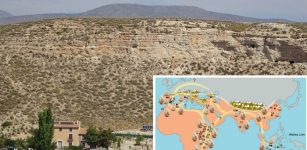 Evidence Of Europe’s Earliest Human Presence, Dating Back 1. 3 Million Years Found At Venta Micena, Iberian Peninsula
Evolution | Jul 13, 2024
Evidence Of Europe’s Earliest Human Presence, Dating Back 1. 3 Million Years Found At Venta Micena, Iberian Peninsula
Evolution | Jul 13, 2024 -
 Strange Ancient Underground Mystery In Connecticut Baffles Residents And Scientists
Featured Stories | Jun 3, 2024
Strange Ancient Underground Mystery In Connecticut Baffles Residents And Scientists
Featured Stories | Jun 3, 2024 -
 On This Day In History: Myth Says Ancient Rome Was Founded By Romulus – On Apr 21, 753 BC
News | Apr 21, 2016
On This Day In History: Myth Says Ancient Rome Was Founded By Romulus – On Apr 21, 753 BC
News | Apr 21, 2016 -
 Tiny Tools And Skills Of Mysterious Toaleans People In Southernmost Sulawesi, Indonesia
Archaeology | May 27, 2021
Tiny Tools And Skills Of Mysterious Toaleans People In Southernmost Sulawesi, Indonesia
Archaeology | May 27, 2021 -
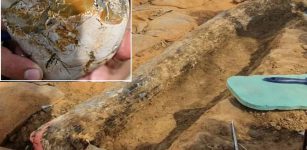 A Half-A Million-Year-Old Well-Preserved Elephant Tusk Unearthed In Israel
Archaeology | Sep 2, 2022
A Half-A Million-Year-Old Well-Preserved Elephant Tusk Unearthed In Israel
Archaeology | Sep 2, 2022 -
 Unique Ancient Gold Cloth Found In The Necropolis Of Saint-Pierre-l’Estrier Is The Largest Antique Piece Found To Date
Archaeology | Aug 13, 2022
Unique Ancient Gold Cloth Found In The Necropolis Of Saint-Pierre-l’Estrier Is The Largest Antique Piece Found To Date
Archaeology | Aug 13, 2022 -
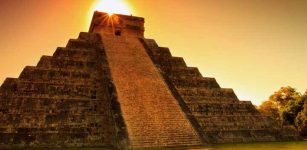 Impressive Pyramid Of Kukulkan (El Castillo’) At Chichen Itza
Civilizations | Feb 7, 2017
Impressive Pyramid Of Kukulkan (El Castillo’) At Chichen Itza
Civilizations | Feb 7, 2017 -
 King Offa Of Mercia And The Murder Of King Ethelbert – Revenge Or Jealousy?
Featured Stories | Jul 19, 2018
King Offa Of Mercia And The Murder Of King Ethelbert – Revenge Or Jealousy?
Featured Stories | Jul 19, 2018 -
 Large Mammoth Tusk And Bones Buried For Thousands Of Years Found In North Dakota
News | Jan 8, 2024
Large Mammoth Tusk And Bones Buried For Thousands Of Years Found In North Dakota
News | Jan 8, 2024 -
 Is A Gigantic Ancient City Hidden Underwater In The Bermuda Triangle?
Featured Stories | Jul 8, 2014
Is A Gigantic Ancient City Hidden Underwater In The Bermuda Triangle?
Featured Stories | Jul 8, 2014 -
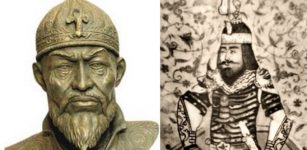 Timur: Brutal Military Leader And His Desire To Conquer But Not To Rule
Featured Stories | Mar 13, 2019
Timur: Brutal Military Leader And His Desire To Conquer But Not To Rule
Featured Stories | Mar 13, 2019 -
 Satellite Images Reveal Ancient Mesopotamian City Pre-Dating The Egyptian Pyramids
Archaeology | Mar 10, 2022
Satellite Images Reveal Ancient Mesopotamian City Pre-Dating The Egyptian Pyramids
Archaeology | Mar 10, 2022

